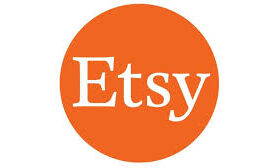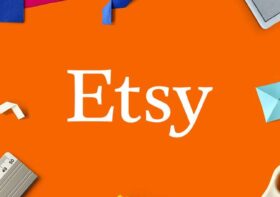How to Sell Digital Art and NFTs on Shopify (2025 Guide for Creators)

In 2025, the line between art, technology, and commerce is practically invisible. Artists who once shared their work on social media for likes are now building six-figure businesses by selling digital art and NFTs (Non-Fungible Tokens).
This is not a hype bubble. It’s the new creator economy, and if you’re an artist, illustrator, designer, or creative visionary—you’re sitting on a goldmine.
Now, you might be wondering: How do I actually sell my NFTs or digital art like a pro without getting lost in the tech jargon?
The answer? Shopify.
Once known as the go-to platform for T-shirt stores and dropshipping empires, Shopify has quietly become a powerful ally for creators selling blockchain-powered art. With NFT integrations, wallet support, and crypto payments—Shopify in 2025 makes selling digital assets easy, scalable, and 100% yours.
Let’s break down how to build your digital art empire using Shopify—step by step.
🏗 Step 1: Set Up Your Shopify Store for NFTs
🔧 Choose the Right Shopify Plan
Start with the Basic Shopify plan (or higher) to access necessary integrations. You’ll need app support and potentially custom domains, so avoid the “Starter” plan.
🔌 Integrate NFT-Friendly Shopify Apps
To sell NFTs, you’ll need apps that connect your store to the blockchain. Here are your best options:
- Vincere – Enables minting and selling NFTs from your storefront
- MintGate – Offers token-gated content (perfect for exclusive digital downloads)
- Manifold x Shopify Integration – A favorite for serious NFT artists who want full smart contract control
- Shopify x Thirdweb – A rising Web3 solution for wallet connection and NFT display
✅ Quick Tip: Check the app documentation for compatibility with the blockchain you intend to use (Ethereum, Polygon, Solana, etc.)
🎨 Step 2: Create Your Digital Art or NFTs
Let’s get to the soul of the operation—your art.
🎨 Use Professional Digital Art Tools
Depending on your skillset and style, consider:
- Procreate (iPad) – For hand-drawn art, animations, or line work
- Adobe Illustrator or Photoshop – Ideal for polished, high-resolution work
- Blender or Cinema 4D – For 3D models, motion design, and VR-ready art
- Canva – Quick, clean designs (great for collections or covers)
💎 Mint Your Art into NFTs
Minting is how your art becomes a digital asset on the blockchain.
You can mint on:
- OpenSea (supports Ethereum and Polygon, easy to use)
- Manifold (custom smart contracts, artist-owned)
- Rarible, Zora, or Foundation (community-focused)
🔁 Batch Minting Tip: For large collections, use a tool like HashLips or use apps integrated with Shopify that allow batch minting through CSV uploads.
Once minted, you’ll receive:
- A token ID
- The smart contract address
- A wallet destination (yours or the buyer’s)
These will be used later in your product setup on Shopify.
🛒 Step 3: List & Sell NFTs on Shopify
Now it’s time to showcase your art like the masterpiece it is.
📁 Set Up a Dedicated NFT Product Page
Each NFT should be treated like a product. Your product page should include:
- High-res preview image or animation
- Description with story behind the piece (buyers love context)
- Blockchain details (Ethereum, Polygon, etc.)
- Smart contract address and token ID
- Instructions for buyers (e.g., “connect wallet to claim NFT”)
🔗 Enable Wallet Integration
Use apps that allow customers to connect wallets like MetaMask, WalletConnect, or Coinbase Wallet during checkout or post-purchase.
If your NFTs are connected to exclusive content (like a digital download, audio file, or video), use MintGate to token-gate access.
💡 Pro Move: Include a bonus file with the NFT—like a time-lapse of the creation process, secret audio note, or discount code for future drops.
📢 Step 4: Market Your Digital Art & NFTs Like a Brand
Creating art is step one. Selling it consistently? That’s marketing.
📱 Use the Right Social Platforms
- Twitter/X – Still the epicenter of NFT culture. Post previews, drop announcements, threads.
- Instagram – Showcase polished visuals and reels of your process.
- TikTok – Create short-form content showing your creation journey, tools used, or reactions to your sales.
- Discord – Build a private community of collectors and superfans. Offer exclusives to holders.
🤝 Collaborate & Cross-Promote
- Partner with other artists for limited edition collections
- Do IG Lives or Twitter Spaces around upcoming drops
- Offer whitelist spots for early access to collectors
🚀 Smart Tip: Use Shopify’s built-in blog feature to write stories about your art, the meaning behind collections, and your Web3 journey. It builds SEO and gives collectors more to connect with.
💳 Step 5: Accept Payments for NFTs
You’re almost there—let’s talk money.
🪙 Accept Crypto (and Fiat)
Crypto Gateways for Shopify:
- Coinbase Commerce – Accepts Bitcoin, Ethereum, USDC, and more
- BitPay – Supports a wide range of coins including Dogecoin
- NOWPayments – Another flexible crypto checkout option
You can also use Shopify Payments or PayPal for those who want to pay in traditional currency.
⚠️ Heads-up: If you accept fiat payments, make sure your delivery method (like token airdrop) is automated or well-communicated. Fiat buyers may not understand blockchain.
✅ Conclusion: You’re Not Just Selling Art—You’re Building an Ecosystem
Selling digital art and NFTs on Shopify in 2025 is no longer a tech experiment—it’s a business model for the modern creator. You now have access to tools that empower you to:
- Create beautiful, ownable digital works
- Sell directly to your audience
- Bypass traditional gatekeepers
- Earn royalties on resales
- Build long-term communities around your art
Final Thought:
You don’t need a huge budget or a viral collection to win in this space. What you need is consistency, authenticity, and the right setup.
So go ahead. Launch your Shopify NFT store. Put your art out there. Your future collectors are waiting.



